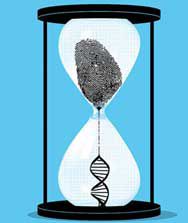Five Golden Principles For Proving Criminal Offences On The Basis Of Circumstantial Evidence
- The circumstances from which the conclusion of guilt is to be drawn should be fully established.
- The facts so established should be consistent with the hypothesis of the guilt of the accused.
- They should exclude every possible hypothesis except one to be proved.
- The circumstances should be of a conclusive nature and tendency.
There should be a chain of evidence so complete as not to leave any reasonable ground for the conclusion consistent with the innocence of the accused and must show that in all human probability the act must have been done by the accused.
The Supreme Court observed that the false explanation and non explanation to the question s posed by the Court u/s 313 Crpc can not be used as a link to complete the chain.It can only be used in an additional circumstances when prosecution has proved the chain of circumstances leading to the conclusion that the guilt of the accused.
Ref Shivaji Chitappa Patil vs State of Maharashtra dt 2.3. 2021
It is more settled principles of Law that if two views are possible,one which goes in favour of the prosecution and the other which benifit s an accused persons, the accused undoubtedly entitled to benifit of doubt.The principle has a special relevance in cases where guilt of the accused can be proved by circumstantial evidence.
Also Read:
Law Article in India
Legal Question & Answers
Lawyers in India - Search By City
LawArticles
How To File For Mutual Divorce In Delhi

How To File For Mutual Divorce In Delhi Mutual Consent Divorce is the Simplest Way to Obtain a D...
Increased Age For Girls Marriage

It is hoped that the Prohibition of Child Marriage (Amendment) Bill, 2021, which intends to inc...
Facade of Social Media

One may very easily get absorbed in the lives of others as one scrolls through a Facebook news ...
Section 482 CrPc - Quashing Of FIR: Guid...

The Inherent power under Section 482 in The Code Of Criminal Procedure, 1973 (37th Chapter of t...
The Uniform Civil Code (UCC) in India: A...

The Uniform Civil Code (UCC) is a concept that proposes the unification of personal laws across...
Role Of Artificial Intelligence In Legal...

Artificial intelligence (AI) is revolutionizing various sectors of the economy, and the legal i...








Please Drop Your Comments